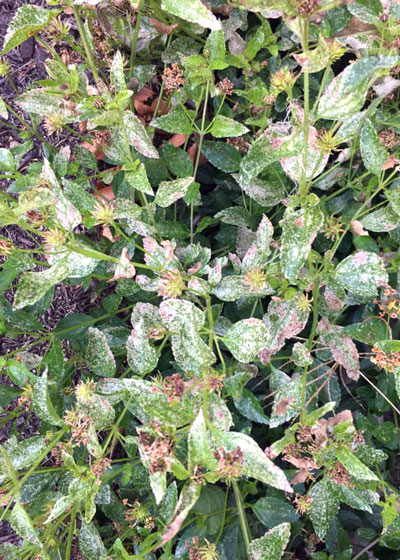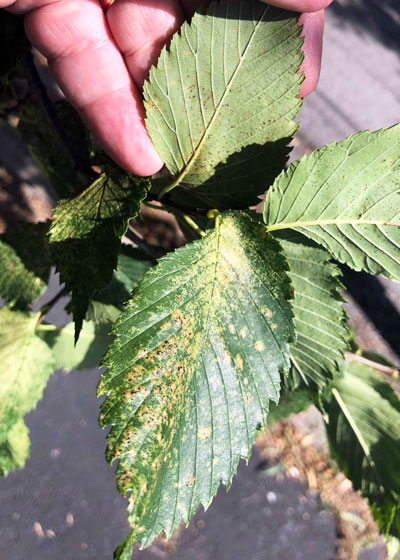Question of the Week Number Two: July 25, 2019

You’re seeing the damage of lacebugs, but you probably won’t see the lacebugs themselves. They have clear wings that look almost like crisp Cellophane®. However, what you will see will be tiny black, waxy globs on the backs of the leaves. Those are the excrement of the lacebugs. And you’ll also see the tan mottling that’s the telltale signs that lacebugs have been feeding on the foliage. It shows through to the top surfaces.

Short-form answers to your questions…
• Plants that are impacted: (This is far from a complete list – just some that come to mind easily.) Lantanas, pyracanthas, American elms, sycamores, azaleas, chinquapin and bur oaks, Boston ivy, loropetalums, cotoneasters and so, on and on.
• Size: Not much larger than a pinhead.
• Color: Mostly clear wings.
• Density: Few present at any time, therefore hard to see.
• Damage: Suck sap, chlorophyll out of leaves.
• Evidence: Black specks on backs of leaves and tan speckles evident on tops. Usually results in secretion of sticky honeydew that drips onto surfaces below. Black sooty mold grows in that honeydew.
• Way you can tell lacebug damage from spider mite damage: the black specks, honeydew drips and slightly larger mottling of lacebugs. Seeing the nearly microscopic mites when you thump a suspect leaf with spider mites over white paper.
• Magnitude of damage to host plant: Minimal and certainly not fatal, but highly disfiguring.
• Control: Apply systemic insecticide early in season, before speckling typically starts (probably May) or use contact insecticide immediately when you see the first speckling.
